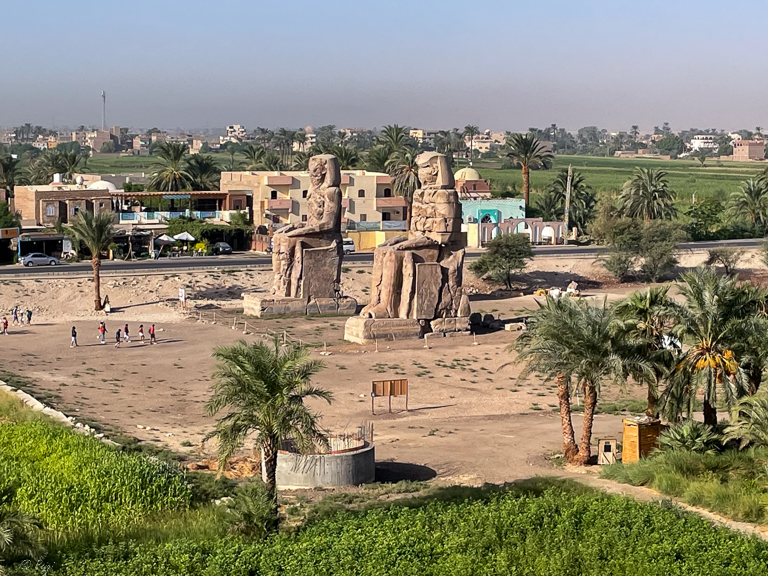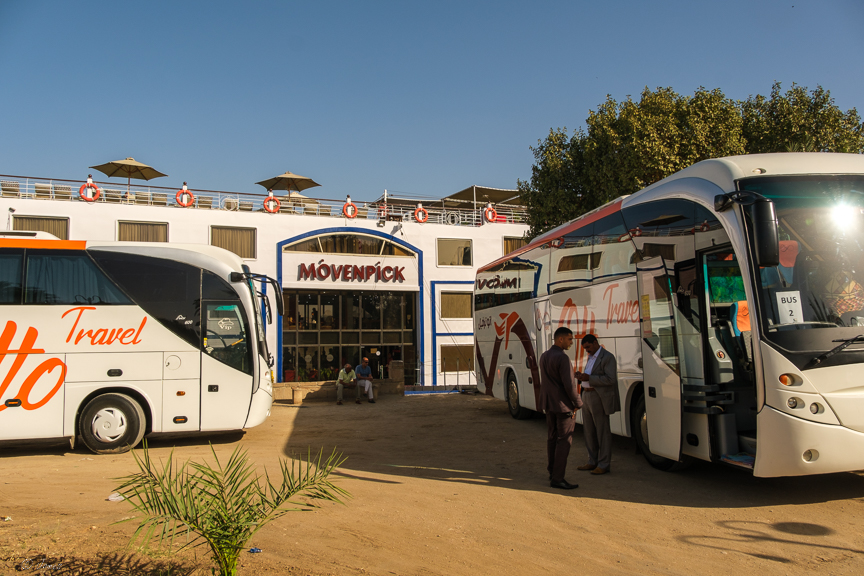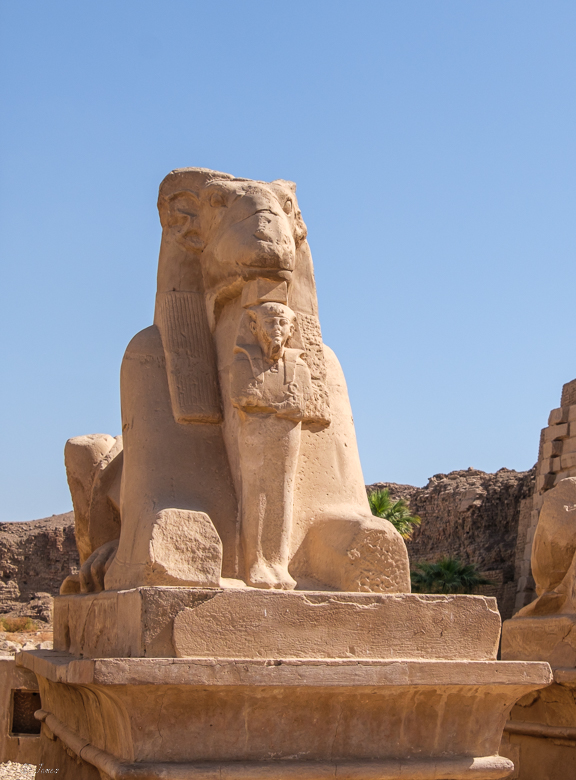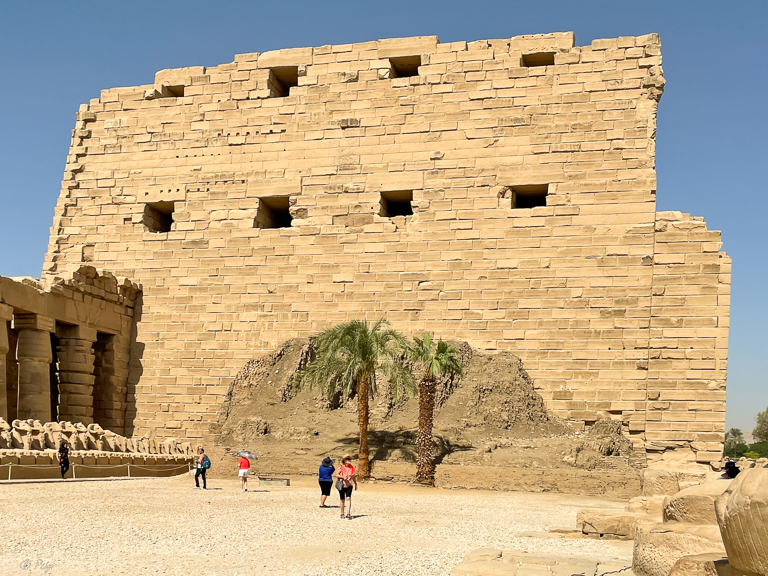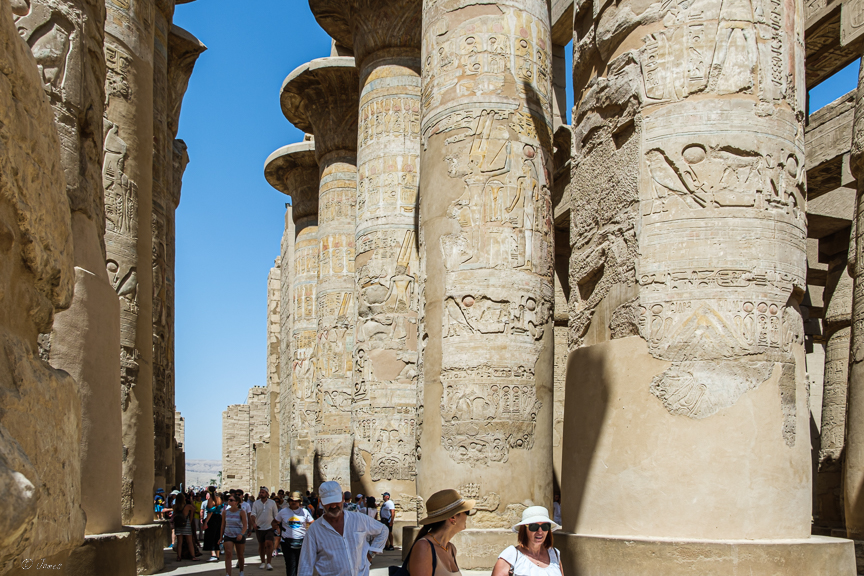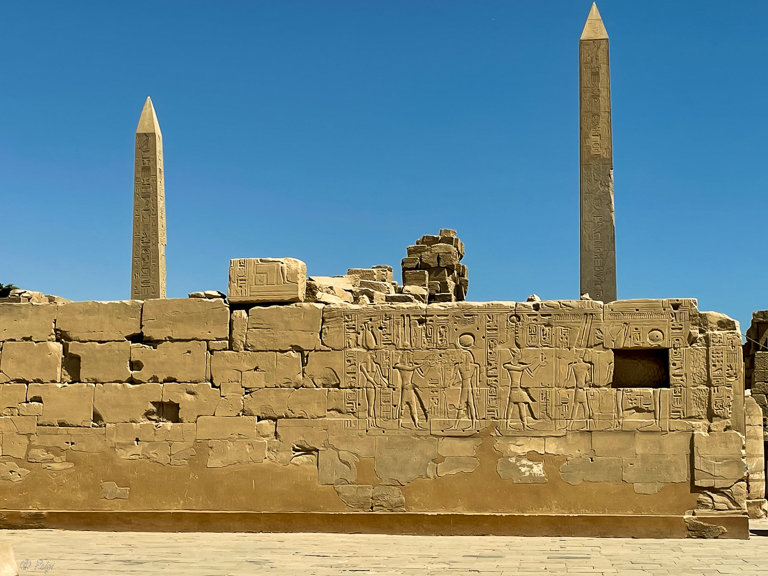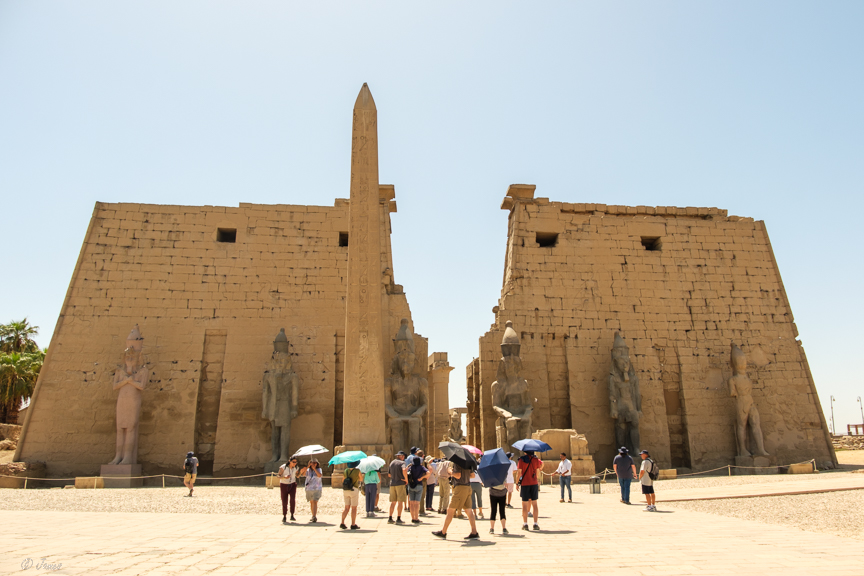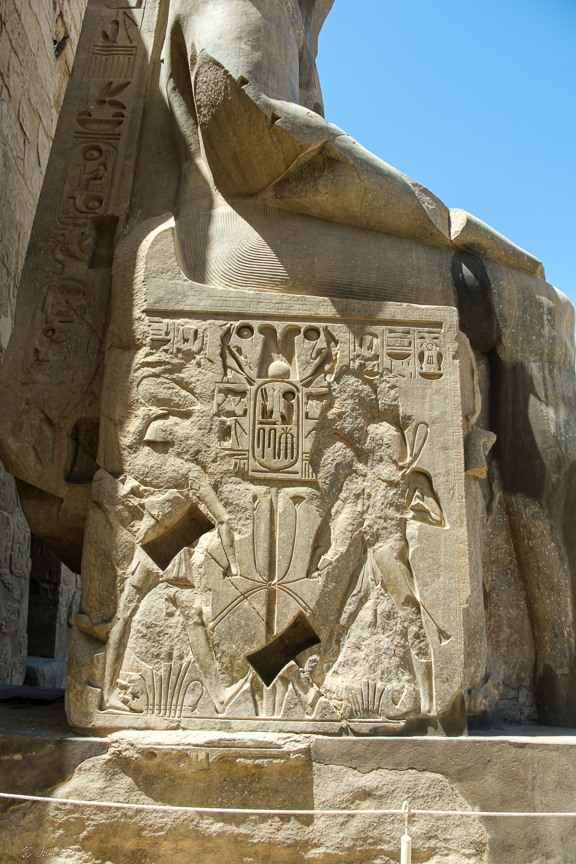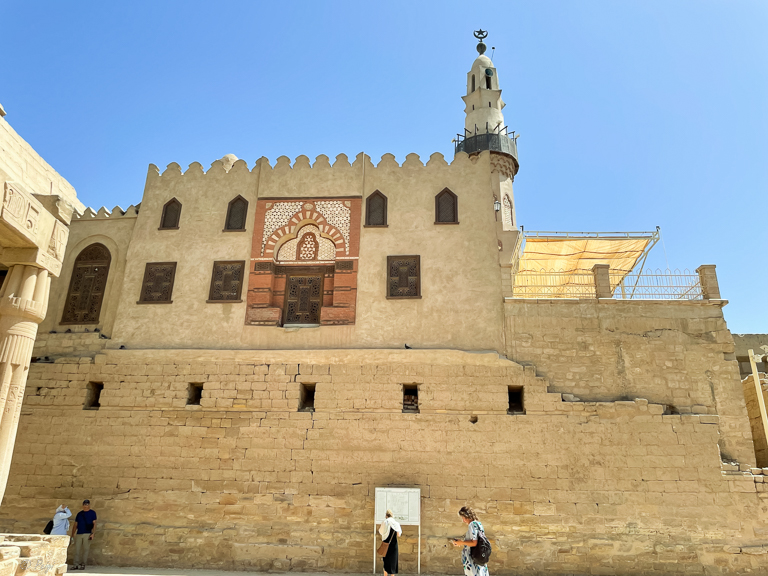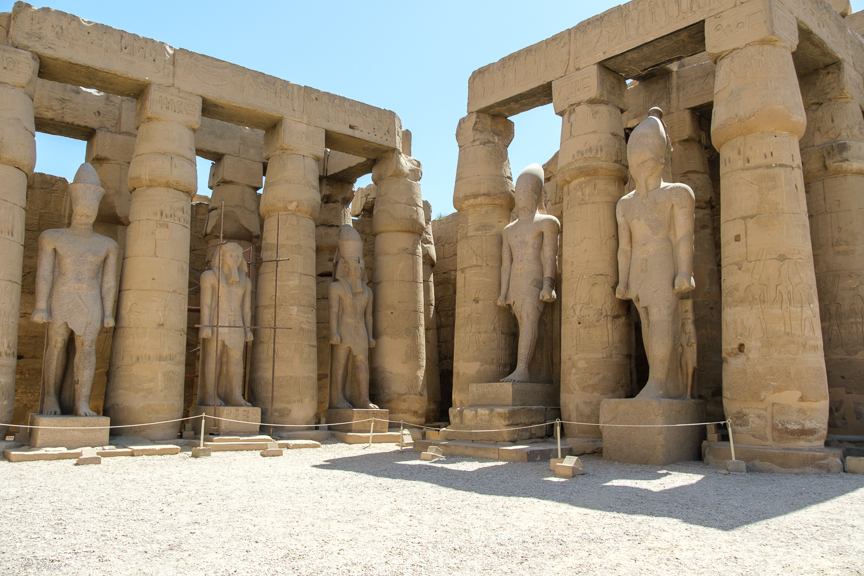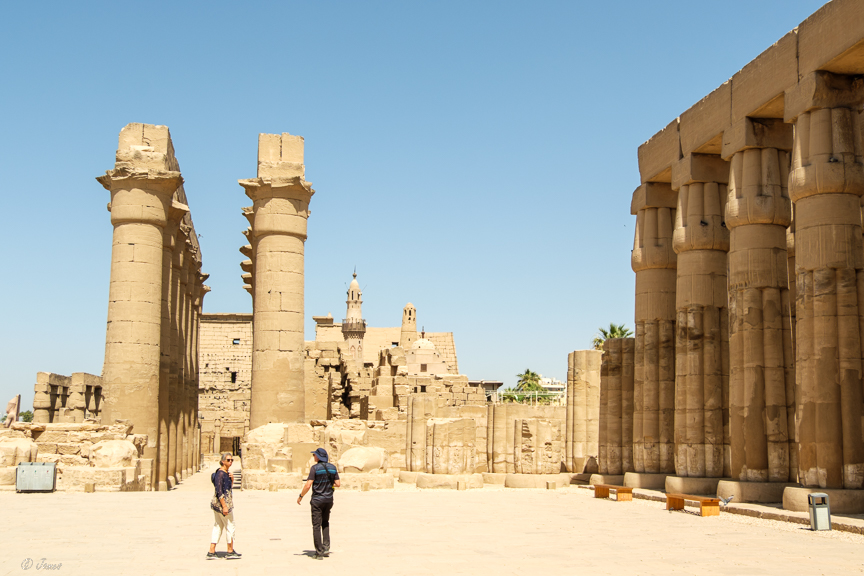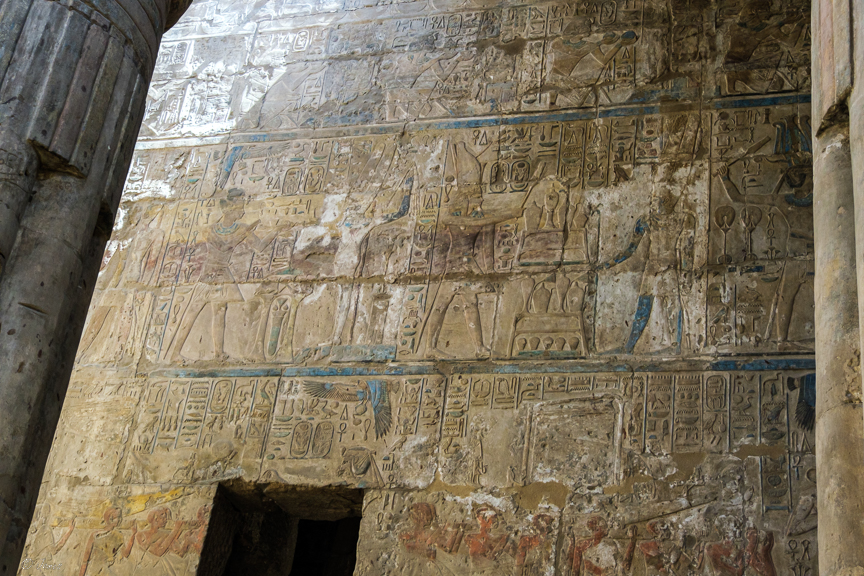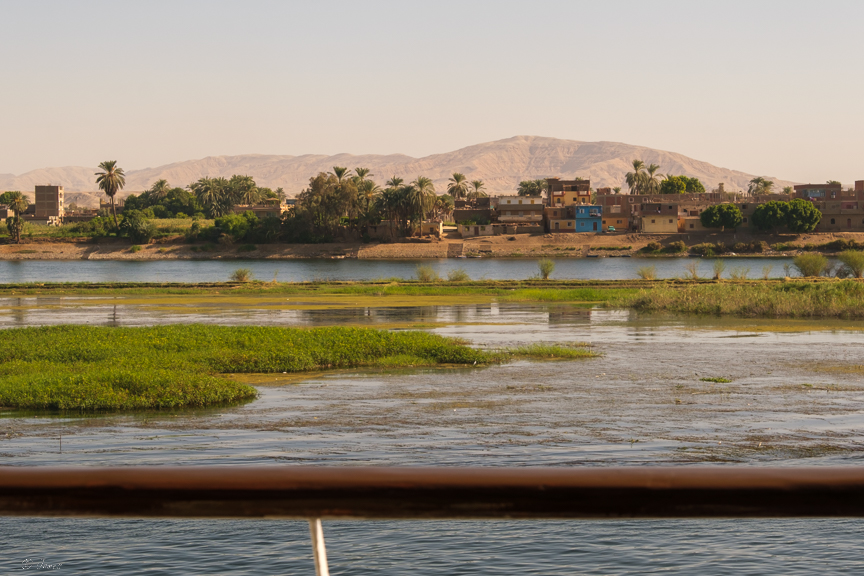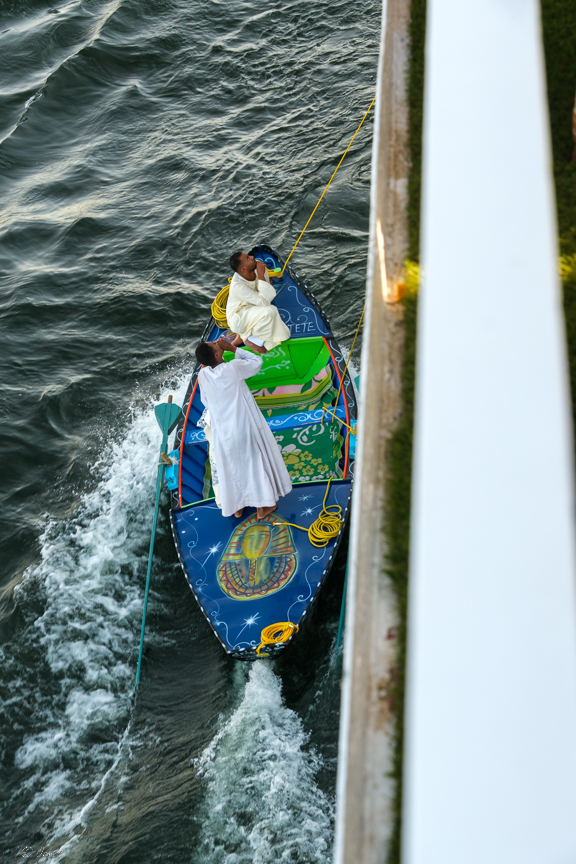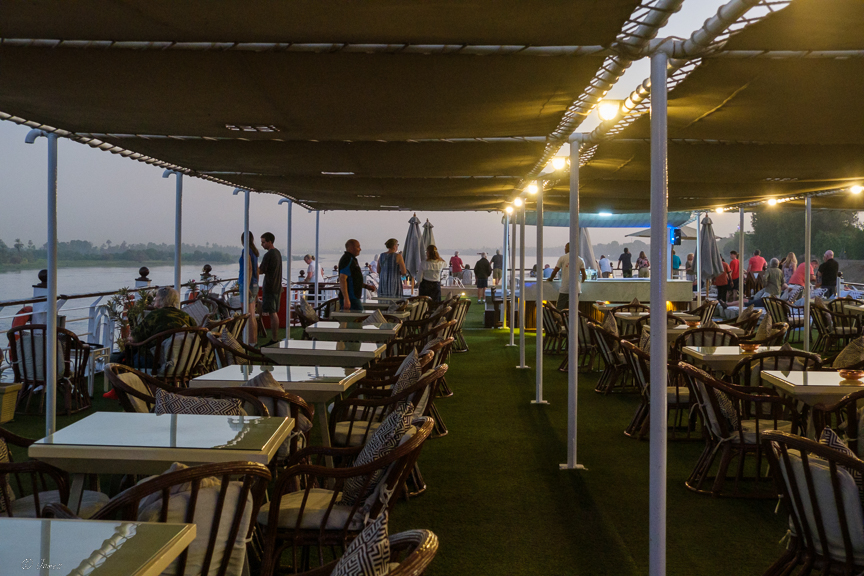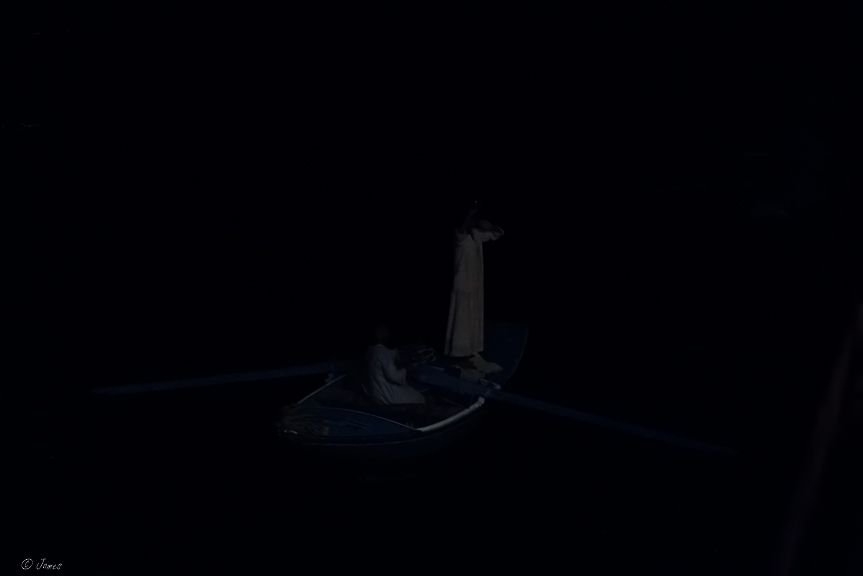Peigi and Jason took the option of an early balloon flight. I felt too unwell to also go, a pity as it was a reasonable price and provided a different view as can be seen in her photos of the mortuary temple of Queen Hatshepsut (center top), the Colossi of Memnon of Amenhotep III, and the sharp boundary of the green valley and bare rocky hills.
After an amazing breakfast choice, we went to Karnak temple, the largest religious complex in the world, to see the artefacts of Shishak and Taharqa.
Karnak temple was founded in 2000 BC but building continued until 30 BC in the 12th Egyptian/Ptolemaic dynasty. Joseph was in Egypt at the beginning, and it was completed in the Roman era.
It has 22 temples on 62 acres. The complex was built around the “sacred lake” fed by a natural spring. 1200 Sphinx used to connect the Karnek temple to Luxor temple “The Avenue of the Sphinx), most still underground. One granite statue weighs 200 tonnes in one block, an Obelisk 320 tonnes, 30 metres long.
The 134 columns of the hypostyle hall is the largest room of any ancient religious building and there are several smaller temples as well as a sacred lake. Senusret was the second pharaoh of the 12th dynasty about 1920-1875 BC; his name means ‘The Ka of Re is created’. He was succeeded by Amenemhat II 1920 – 1875 BC.
The main difference between Karnak and other Egyptian temples is the long period of time over which it was developed by 30 different pharaohs. Many columns in the hypostyle hall are 10 m tall with architraves estimated to weigh 63 tons. Three major areas are dedicated to gods Amun, Mut, (Amun’s wife), and their son Montu. The Temple has the relief of Thutmoses III commemorating his victory at Megiddo. The northern external wall of the hall is covered with battle scenes celebrating the military achievement of Seti I, including his conquest of Canaan. The Merenptah relief (19th dynasty) on top of the Ashkelon wall relief, may depict Israelites. Many Biblical cities are mentioned but not Jerusalem which reflects the accounts of Pharaoh Shishak in 1 Kings 14:25. Thutmose I had his stellae (obelisk) erected here; later Hatshepsut (his daughter) had a taller one erected.
It required great effort to create the millions of hieroglyphs and reliefs on stone in all these temples and pyramids; there is seldom an untouched surface. Besides the clean, sharp etching, and their beauty, every mark tells a story, sometimes accurate, sometimes embellished for the pharaoh. The position of arms, legs, body, the clothing, ‘crown’ are all significant. We were bombarded with details but it was too fast and overwhelming to record. A few: the crown type depicts whether the pharaoh ruled the north or south – or both; if his left leg is forward, he is marching with the army; crossed arms means in prayer. Sometimes a daughter is at his feet. The scarab dung beetle is heart shaped, meaning ‘life’, so it was placed in heart of the mummy to restore life.
We visited a papyrus factory where we were shown how papyrus was and still is made. Simply, stripping the external green, pounding the heart, soaking for 6 days, then laying the bits in two crossing layers and then pressing for 6 days. They use very attractive bright coloured paints depicting various religious aspects and some secular. One showed the weighing of the Pharaoh’s heart- if light, paradise can be entered. I liked some of the large variety but didn’t buy as hanging this on a wall would worry us.
Next was Luxor Temple at the other end of the Avenue of Sphinxes. By now, the temperature was above 40C and time was running out, so it was somewhat rushed, not allowing a full appreciation of a major feature ie what’s left of the 3 km double row of sphinxes named ‘The Avenue of Sphinxes’ leading to the Luxor Temple entrance from Karnak. These sphinxes have a lion body and a ram head. This was the ceremonial way for the divine sun boat to travel celebrating the festival of Opet to Amun, Mut, and Montu who rode as statues in the boat.
Amenhotep III ruled in the new kingdom from 1388-1351 BC known as ‘Amun is Satisfied’ also as ‘Amenhotep the Magnificent’ and ninth pharaoh of the 18th dynasty. We ‘met’ him at the Colossi, the pharaoh who made so many statues of himself, and created the ’Golden City’ (the Rising of Aten).
This temple is known as ‘ipet resyt’ ‘the southern sanctuary’. Its greatest annual feast of Opet was dedicated to the Egyptian divine ruler and the Royal Ka which represented his soul. Examples of the Ka ideology can be seen in the colossal Ramses II seated statue in front of the pylon, ie the temple gate entrance, as he tried to claim the temple for himself. At the entrance to the colonnade are Ka statues of the king embodying the Royal Ka ie spirit.
Back on the boat, I decided to check the top deck despite the early afternoon heat. As I stood there, shaded from the hot sun by a large awning, motoring up the Nile, I was suddenly overwhelmed by the beauty and history of the passing parade. Deep blue water, palms, mud brick flat roofed homes, some unfinished but occupied, in the hope of completion some time, cattle grazing, rice paddies, fields, gardens, bananas, and in the distance, the barren stark brown hills, and the heat washed blue sky above. To complete the scene, a sax played quietly in the background. ‘Words cannot contain the thoughts that arise in me’ – Tennyson. The centuries of history marked by the famous – from Pharaohs, Moses, Jacob, Cleopatra and Caesar to the British generals, adventurers, and explorers. All have seen this seen this sun baked land. And here I am, so grateful to see it, so nearly missed it.
Later, a small rowing boat tied up below as we moved. ‘Hello, hello’ called one of the two to attract us, selling cloth. Ships greet as we pass, some with musical blasts, some the usual horn.
And then it was time for tea!
After an excellent presentation by Keanan showing the relationship of the Bible to the Egyptian history, if one uses the correct pharaohs rather than those selected by the secular historians, we rushed to the top deck for the lock crossing but waited an hour till arriving at it. This resulted in a conflict as it was time for cocktails, solved by going down to get them returning to the top. The crowd was entertained by many more boat hawkers making sales of cloth and carpets thrown up to us in plastic bags. Some were thrown back.
